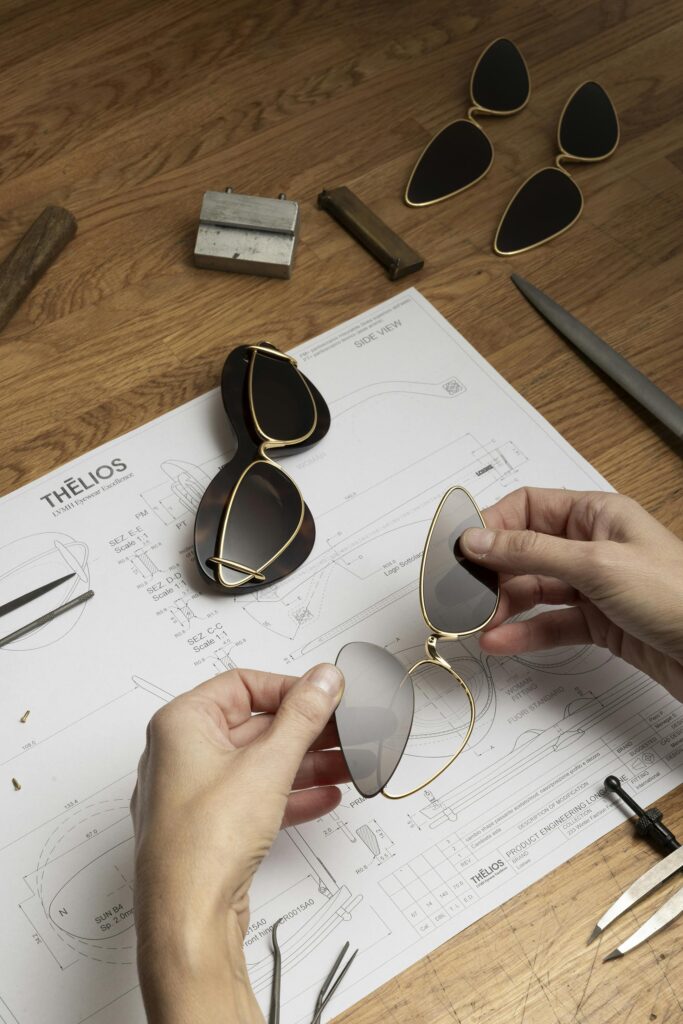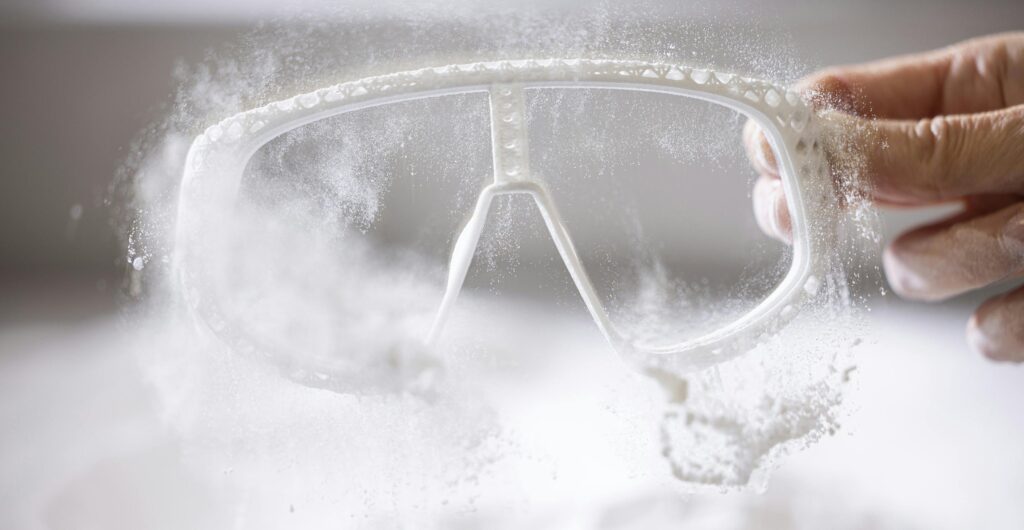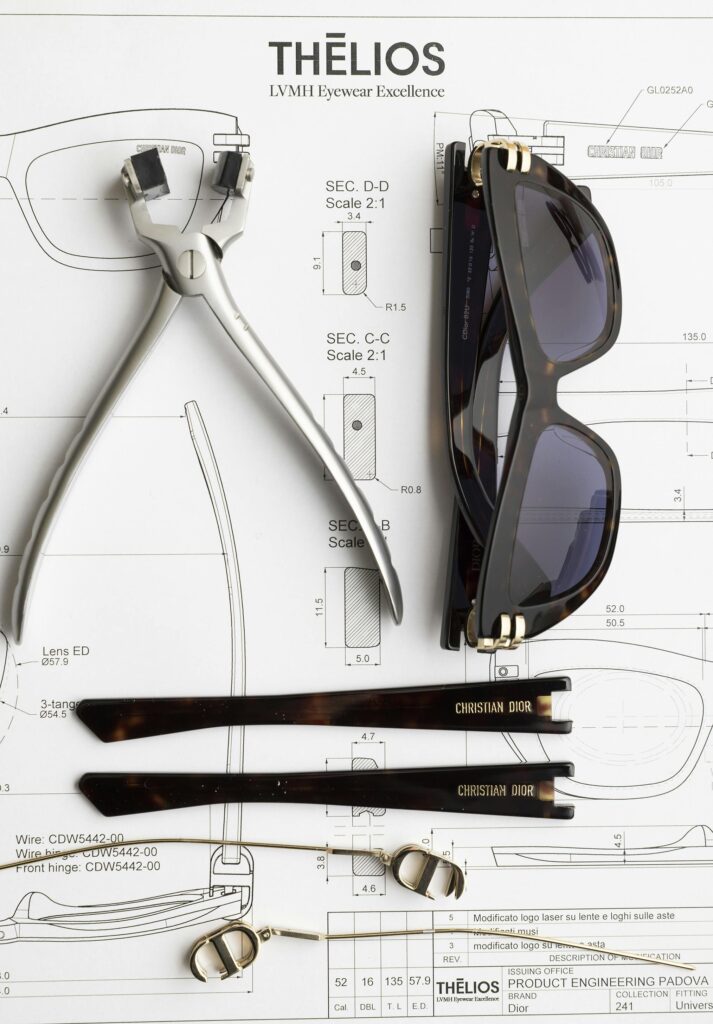In this “Eye on Additive Eyewear” series, we’re looking at 3D printing eyewear. 3D printing firms such as Materialise have been trying to grow this category for over a decade. We could be close to being cost-competitive, and current ways of producing eyewear are very inefficient. With fickle consumers and rapid changes in trends, it seems to be an ideal marriage—3D printing and eyewear. Is it?
LVMH
Today, we’re looking at LVMH, an $86 billion revenue luxury goods group that owns Moët & Chandon champagne, Fendi, Celine, Kenzo, Loewe, Marc Jacobs, Bulgari, Givenchy, Hublot, TAG Heuer, and more. LVMH has incomparable heft and excellent financial performance. It has stellar marketing people across all major luxury goods industries as well. However, it’s a bit spotty on quality, with TAG Heuer watches and Louis Vuitton bags deemed lesser than competitors by insiders.
If fashion and luxury are made of cash, flash, brand, trend, style, and quality, the firm is a leader in cash, flash, and brand, while typically a follower in trend and style and iffy in quality. I’m generalizing here, and the statement is, of course, not always true across all products and all brands. But it is uncanny how often LVMH has the biggest brand, which is ever-present and considered the best by outsiders, but is deemed overpriced by insiders. I’ve verified this with fashion and luxury manufacturing people in footwear, watches, small leather goods, and clothing.
LVMH outsources a lot of production, typically controls or at least tightly manages retail, and has immense market power in the marketplace and fashion media. It hardly ever discounts, preferring in some cases to destroy products. LVMH is a ruthless company and is very good at evolving brands into globally recognized and available leaders in luxury.
The Market at LVMH
Initially, small Italian firms made eyewear for themselves and other brands. Whole constellations of companies specialized in lenses, resin frames, small metal components, bridges, and hinges emerged. Later on, Luxottica and its competitors grew the eyewear business into a global phenomenon. Luxottica is completely vertically integrated, able to manufacture nearly all components itself, and is even active in retail and distribution. This let it eke out more profit from ever larger deals with brands. It turned out that there were only so many truly global brands that could become global eyewear brands. This allowed Luxottica to dominate an industry it helped create.
Today, Luxottica makes Ray-Bans, Persol, and Oakleys, which are its own brands, and also makes eyewear for Chanel, Giorgio Armani, Dolce & Gabbana, Prada, and Ralph Lauren. These global brands trust Luxottica to design and develop their eyewear brands appropriately and give them substantial revenue. For a company like Brunello Cucinelli, which specializes in cashmere and is family-owned, outsourcing makes sense. However, for huge brands like Versace, other options can be tempting. LVMH has a stable of brands for which eyewear is either a side gig they will never prioritize or whose size would warrant their own production.
Thélios
The group essentially has a bunch of shared services, such as IT, so it logically decided in 2017 to create another shared service in sunglasses manufacturing. Based in Italy, where a lot of the sunglasses industry is clustered, its Thélios unit is classed as a Maison because a division would sound boring. Run by an 11-year Luxottica veteran, Alessandro Zanardo, Thélios is LVMH’s internal eyewear manufacturing unit.
Across LVMH’s many divisions, the potential for eyewear is enormous. Marc Jacobs, Off-White, Dior, Fendi, Kenzo, and more all have immense potential. Furthermore, with 17 fashion brands, the company could be active across the board with many creative styles at many price points. Perhaps Rimowa will have a successful fashion line in glasses as well, and Loro Piana will one day have glasses that command the same margins as its fabrics do. LVMH seems to be investing in its eyewear as well. It has recently bought both Vuarnet and Barton Perreira and placed them not as separate Maisons but under Thélios.
The current structure, therefore, lets LVMH collect smaller firms that are perhaps only viable as eyewear brands or are too small to be considered a house. Its more granular structure should make it faster.
Thélios has 40,000 square meters of production space in Italy and a further 17 offices worldwide. The unit is said to employ 1,000 people and can produce up to 4.5 million frames in-house. Thélios currently works for 13 of LVMH’s brands. The firm collaborates with local partners and others in the local eyewear industry. A key differentiator is its aim to be innovative and make use of new technologies.
The company 3D-printed glasses for Givenchy and Fendi. The Givenchy cut glasses are eye-catching, comfortable, and incredibly angular (and feel very un-Givenchy). Starting at around $600, they’re also pricey. The Dior3D S1 glasses are similarly high-end and come in black, with a fetching green pair also available.
What Does this Mean For the Eyewear Industry?
Luxottica dominated the eyewear industry, having perhaps a 25% market share. LVMH is one of the only companies that will not have to depend on it. However, they still have to develop a retail chain of independent partners to rival those owned by and catered to by Luxottica. Can it find enough local partners or develop enough unique stores to grow? Will strong brands like Dior propel their reach forward?
Perhaps, out of necessity, they could turn to a better online experience and win big there. That seems like the most likely path ahead, along with highly valuable live experiences for the right kind of people.
It seems more than likely that LVMH will take to 3D printing much more so than older players. The company is already taking a deeper dive than many others in the field. It has more to win as well. Less existing infrastructure and distribution and fewer systems to be tied to are an asset here. If it wishes to break into global eyewear in a big way, it needs to do much more than equal Luxottica in performance. It needs superior inventories, it needs to be even more responsive, and it needs to be on trend quicker.
3D printing is a technology that can get them there faster, with less stock, made at the moment of order to the exact size and style required. Apart from a number of startups and Materialise, I believe that it will be Thélios which will disrupt the eyewear market in the most fundamental manner.
Subscribe to Our Email Newsletter
Stay up-to-date on all the latest news from the 3D printing industry and receive information and offers from third party vendors.
You May Also Like
3D Printing News Briefs, June 15, 2024: 3D Printed Research & Lamps & Guns & More
In 3D Printing News Briefs today, we’ll start with some business and research news, then move on to a software tool. We’ve got a story about an accused terrorist and...
Researchers Gain New Levels of Control over Volumetric 3D Printing
A recent study published in Advanced Materials Technologies by Nathaniel Corrigan, Xichuan Li, Jin Zhang, and Cyrille Boyer delves into the advancements in xolography, a pioneering volumetric 3D printing method....
Now on Kickstarter: The “First Stable Desktop Pellet 3D Printer”
Kickstarter has been the graveyard for several high-profile 3D printers. The crowdfunding platform has also introduced numerous subpar 3D printers, alongside some truly outstanding ones. It was on Kickstarter that...
Revolutionizing Additive Manufacturing: A Deep Dive into Hybrid and Multi-Material Printing with PAEKs
The landscape of additive manufacturing is undergoing a profound transformation with the integration of PolyArylEtherKetone (PAEK) polymers. In this article, we explore the exciting possibilities, practical applications, and challenges associated...




































